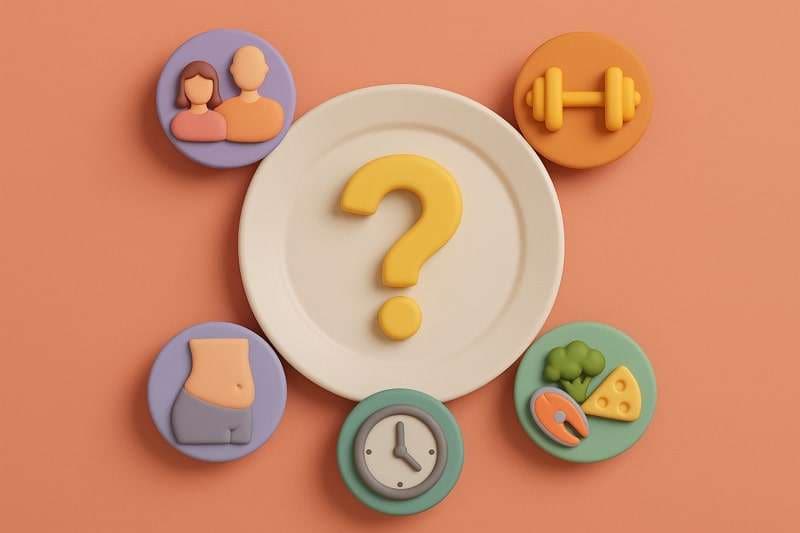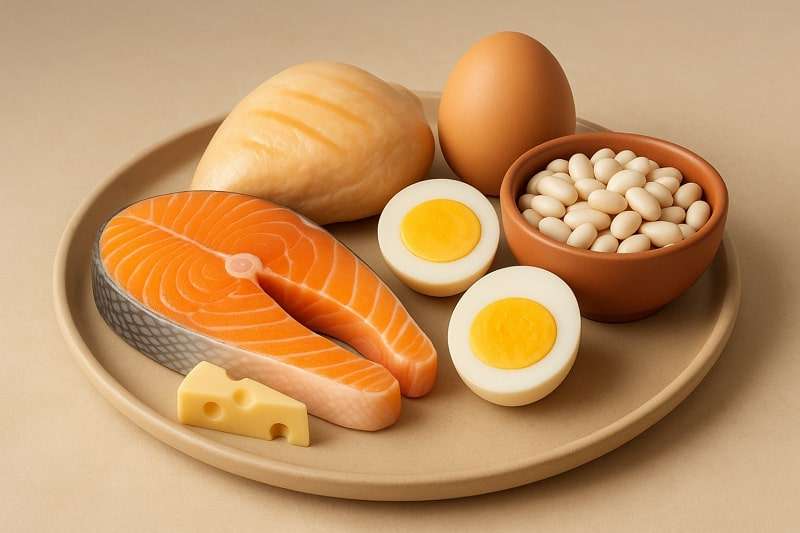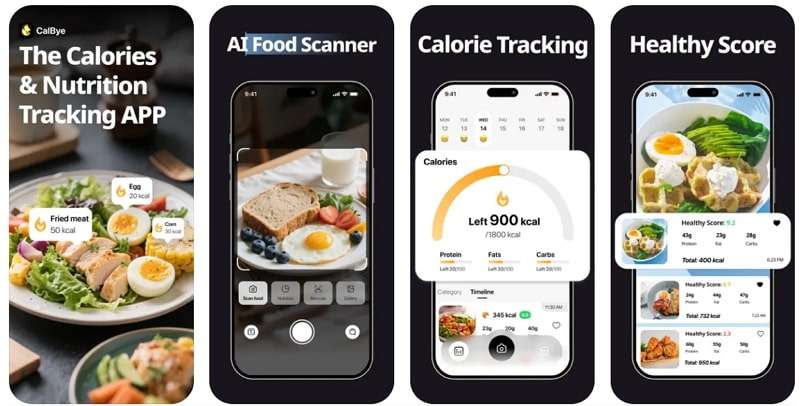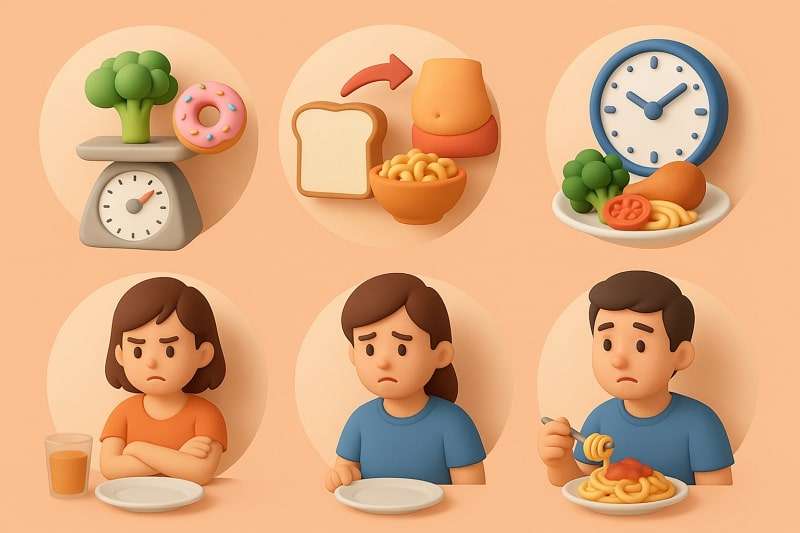If you are struggling to manage your weight and health, the best thing to do is learn how to manage your meal calories. The amount of food one adds to each meal may influence their intake and lead to energy crashes. To maintain a good metabolism and prevent overeating, learn to distribute calories wisely throughout your meals.
The proper ratio of calories will be based on your needs, purposes, and lifestyle. Therefore, this comprehensive guide will provide you with a clear understanding of the recommended calorie intake for a meal. Moreover, you will be introduced to an AI-powered calorie tracker to calculate the calories of each meal, enabling you to manage your food intake efficiently.
In this article
Part 1. How Many Calories Should Be in Each Meal? Understanding Daily Caloric Needs
The following table provides an approximate breakdown of how many calories each meal should contain:
| Age Group | Daily Calories (avg.) kcal | Breakfast (kcal) | Lunch (kcal) | Dinner (kcal) | Snacks (kcal) |
| 2–6 Years | 1,000 – 1,600 | 200 – 320 | 300 – 480 | 300 – 480 | 150 – 250 |
| 7–18 Years | 1,600 – 2,800 | 250 – 560 | 450 – 840 | 450 – 840 | 200 – 400 |
| 19–60 Years | 1,800 – 2,600 | 300 – 520 | 540 – 780 | 450 – 700 | 200 – 400 |
| 61+ Years | 1,600 – 2,200 | 250 – 440 | 450 – 660 | 400 – 600 | 150 – 300 |
Part 2. How Many Calories Should a Meal Be: Factors Influencing Meal Caloric Content
Our food significantly influences our overall health, and several factors determine the number of calories each meal should contain. Together, these elements affect your total daily intake and help you achieve your nutritional goals, such as:
- Calorie Requirements: Calorie requirements vary among individuals based on their level of activity and body composition. The proper amount of consumption ensures daily energy, prevents fatigue, and ensures adequate weight maintenance.
- Meal Distribution: Dividing calories evenly across meals helps keep blood sugar stable, prevents overeating, supports digestion, and ensures consistent energy throughout the day, promoting an improved overall metabolism balance.
- Balanced foods: Mixing carbohydrates and protein with fats in every meal helps the body work efficiently, reduces appetite, improves nutrient absorption, and helps curb unhealthy late-night cravings or excessive snacking.
- Health Goals: Calorie requirements vary according to individual goals and objectives. Whether you're building muscle, losing weight, or maintaining your health, aligning your calorie intake with your personal goals ensures adequate and sustainable progress.
- Food Timing: Eating regularly helps with digestion, boosts nutrient absorption, improves physical performance, and facilitates quicker recovery, which is particularly important for individuals with busy daily lifestyles.

Part 3. Balancing Macronutrients in Each Meal - 5 Tips to Know
This part will explain how many calories should be in one meal, with efficient tips that can help you set up a healthy routine:
1. Include Healthy Carbohydrates
For dinner, it is essential to eat brown rice instead of white rice to stay full and steady for the night. Additionally, fruits and vegetables will provide a balanced supply of nutrients and energy to your body. On the other hand, refined carbs, such as sugar, snacks, and sodas, should be avoided on the diet schedule, as they are energy-draining.

2. Protein in Every Meal
Snacking throughout the day can be avoided by incorporating various types of protein into your meals. Meat or dairy can make your skin healthier and help you avoid overeating. One of the rules to follow is eating a palm-sized portion of protein at each meal. For example, make a sandwich using grilled chicken to last you until noon.

3. Don't Skip Safe Fats
Individuals who want to lose weight do not necessarily need to live on tasteless salad. Olive oil and nuts can be drizzled on the salad to make it healthier to eat. These healthy fats contain essential vitamins that support sustained energy. They also maintain the skin's freshness and help prevent issues with the heart and brain.

4. Portion Balance
To create a healthy and colorful plate, imagine it as a pie divided into portions. Fill half with fruits and vegetables, one quarter with proteins, and the remaining quarter with carbohydrates. This simple approach helps control calorie intake while ensuring your body receives a balanced mix of essential nutrients.
5. Build Balanced Plates Using a Calorie Counting App
If you're trying to determine the calorie count of a meal, consider using an efficient AI calorie tracker app, such as CalBye (Android/iOS). This app can recognize your meals and provide the total calories, along with additional dietary tips. Moreover, its smart calorie tracking provides you with healthier, personalized tips to keep you from over- and undereating.

The app also offers achievement badges whenever you reach your weight or diet goals, celebrating your progress and milestones. With its tailored dietary advice, users can have their own nutrient coach that helps them plan and adopt healthy food habits. You can even get timely hydration notifications that help you keep hydrated throughout the day.
Key Features
- Smart Goal Tracking: This app can scan your meals and provide helpful information on their nutritional value, indicating whether they are healthy or not.
- Various Scanning Options: It offers four scanning options, allowing you to scan any label or barcode.
- Daily Progress & History: This app provides a clear chart to track your nutrient intake, from a single day to several months.
Walkthrough on How to Count Calories & Nutrients of a Meal Using CalBye
Now, let's go through the following steps and learn how this app scans a meal and offers you expert advice:
Step 1. Open the Scan Meal Camera Feature
Press any of the options from the "Just Scan Your Last Meal to get Going" section, and tap "Scan Meal" on the next screen.

Step 2. Start the Meal Scanning Process
Now, select the "Scan Meal" option, point your camera at your food, and the AI will recognize it, displaying the calories.

Step 3. Calorie Count and Nutrient Report
When the scanning is completed, the app provides a detailed calorie count and a "Dietary Advice" section, which you tap "Log it" to record it.

Part 4. 5 Common Misconceptions About Meal Caloric Intake
You can try different strategies to manage your meals effectively; however, it's important to understand the following common myths about meal calories first:

- Fewer Calories Are Better: While reducing calories may support weight loss, consuming too few can slow down the metabolism and cause fatigue, making it harder to achieve sustainable results.
- Carbs Are Bad: These are an essential source of energy for your body and brain. You must consider which type of carbohydrates will serve you better, providing you with energy in the long term.
- Late-Night Eating Gain Weight: When you have the correct number of calories, you will not gain weight by eating late. In this case, late eating does not always result in weight gain.
- Healthy Foods Don't Contain Calories: When you know how to manage what you are eating, this myth is busted. One should not avoid healthy fats and nutrient-rich foods solely because of their calorie content.
- Skipping Meals to Lose Weight: If you starve your body, you're likely to overeat afterward. Therefore, balanced meals help maintain stable energy levels and support healthy weight management.
Conclusion
In summary, this article explains the importance of determining the appropriate number of calories a meal should contain and how people can incorporate the right amount. You explored key factors, common misconceptions, and practical tips for better meal planning. Among the available tools, the CalBye stands out for its advanced AI meal scanning and precise calorie tracking features.
FAQs
-
How do I calculate my daily calorie needs?
Without hassling with manual calculations using complicated formulas, use the CalBye app, which helps break down the calorie count and offers excellent advice. You can follow that explanation and data and decide how much to eat at a time. -
Does meal frequency affect calorie distribution?
It does not significantly impact weight management, but it does affect calorie consumption. Whether you eat three meals or several smaller meals, balancing calories and nutrients for your goals is what counts. -
How do I manage my calorie intake when eating out?
You can manage calories when eating out by checking the nutritional info in advance using the CalBye app. It also helps you choose dishes rich in vegetables and lean proteins while maintaining proper portion control for a balanced meal.





